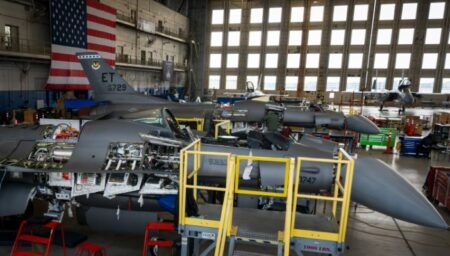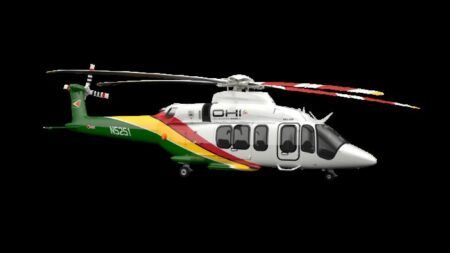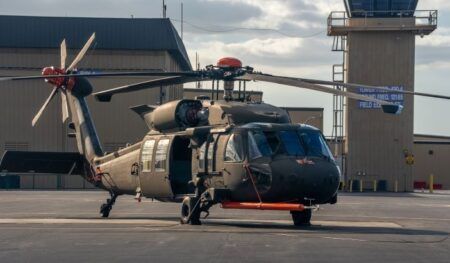Ebit Systems’ wearable Helicopter Enhanced Flight Vision System HeliEVS has completed successful flight trials in its operational configuration. The system combines an enhanced vision sensor (EVS), heads-up display (HUD) and fused image display processor.
The flights with a BO105 helicopter were conducted during different hours of the day, at various locations and while performing rooftop landings and oil rig approaches above the sea. These conditions evaluated real operational flight conditions for use of the HeliEVS in SAR, EMS and rig transportation missions.
Results indicate the system provided increased situational awareness and safety. Pilots indicated that they could recognize, even at night and from long distances, obstacles and the landing points on an oil rig from further away, giving more time to plan optimal approaches.
Flight information and video images were displayed on helmet-mounted HUD systems.
HeliEVS uses multi-spectral sensors to capture and display terrain in darkness and reduced visibility, as well as data from the helicopter’s instruments. Sensor and navigation data combined in the HUD also includes a synthetic vision system (SVS) global terrain database, functioning as a combined vision system (CVS). The CVS provides a high fidelity view of the outside world even when actual visibility is zero. As such, CVS provides the pilot with situational awareness even in total darkness, fog or dense haze. In future, the system will also contribute to the reduction of landing minimums.
For further information please see Aerospace Testing International’s exclusive feature on the earlier development of the HeliEVS.
February 26, 2016




